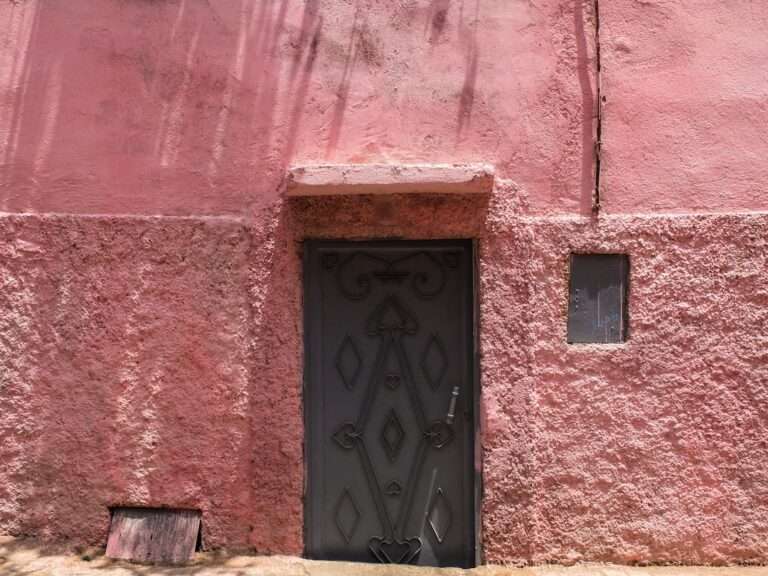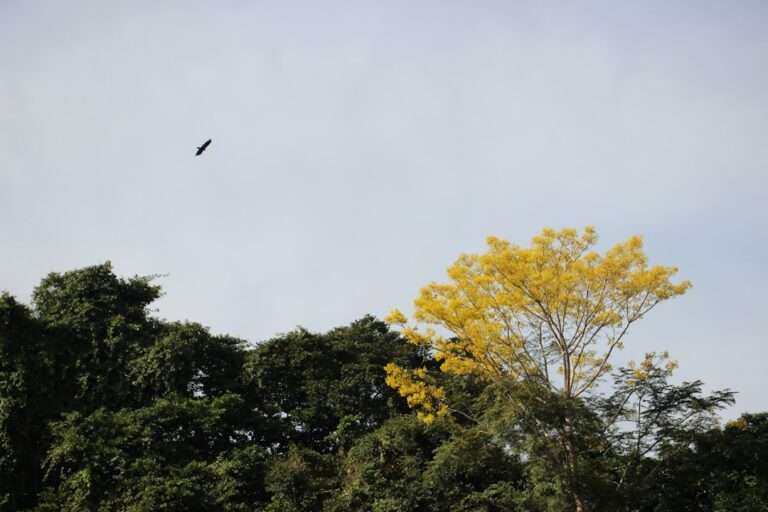How is the green man symbol interpreted in British folklore?

The Green Man is a symbolic figure found in diverse cultures and mythologies throughout history. Its origins can be traced to ancient times, with roots in pagan and pre-Christian traditions. The symbol typically represents nature, fertility, and rebirth, often depicted as a face surrounded by or composed of leaves and foliage.
The Green Man’s origins are believed to lie in ancient Celtic cultures, where it was associated with Cernunnos, the horned god of wilderness and fertility. The symbol was also prevalent in Roman and Greek mythologies, linked to nature deities such as Dionysus and Bacchus. During the medieval period, the Green Man symbol was incorporated into Christian religious architecture.
It appeared as a decorative motif in churches and cathedrals across Europe, often carved in stone or wood. The figure was typically portrayed with foliage emerging from its mouth, nose, and eyes. This integration of the Green Man into Christian spaces is thought to represent an attempt to incorporate pagan imagery into the new religious context, symbolizing the connection between nature and divinity.
The Green Man’s presence in both pagan and Christian contexts demonstrates its enduring significance as a powerful symbol throughout history. Its widespread use and adaptation across different cultures and time periods highlight the universal appeal of themes related to nature, growth, and renewal.
Key Takeaways
- The Green Man symbol has its origins in ancient pagan traditions and is often associated with nature and fertility.
- In British mythology and folklore, the Green Man is often depicted as a mysterious figure representing the cycle of growth and rebirth in nature.
- The Green Man is often interpreted as a symbol of life, death, and rebirth, and is associated with themes of renewal and transformation.
- The Green Man can be found in various forms of art and architecture, including carvings, paintings, and sculptures, often representing the connection between humanity and the natural world.
- Rituals and traditions associated with the Green Man include May Day celebrations, fertility rites, and nature-based ceremonies, reflecting the symbol’s ties to the natural world.
The Green Man in British Mythology and Folklore
The Green Man in Celtic Mythology
In Celtic mythology, the Green Man is associated with the god of the forest and the wild, and is seen as a guardian of the natural world. He is often depicted as a figure with leaves and foliage growing from his face, symbolizing his connection to nature and the cycle of life.
The Green Man in British Folklore
The Green Man is also present in British folklore, where he is often associated with rituals and traditions that celebrate the changing of the seasons. In some traditions, the Green Man is seen as a representation of the spirit of the forest, and is celebrated in rituals that honor the natural world and its cycles.
Celebrating the Green Man
In these rituals, people would dress up in greenery and perform dances and ceremonies to invoke the spirit of the Green Man and ensure a bountiful harvest. The Green Man is also associated with May Day celebrations, where he is often portrayed as a figure who leads the procession and represents the vitality and fertility of the natural world.
Symbolism and Interpretations of the Green Man

The Green Man symbol holds various meanings and interpretations across different cultures and traditions. In general, the symbol is associated with nature, fertility, and rebirth, and is often seen as a representation of the cycle of life. The leaves and foliage that surround the Green Man’s face are seen as symbols of growth, vitality, and renewal, and are often interpreted as a connection to the natural world.
The Green Man is also seen as a guardian of the forest and the wild, and is often associated with protection and abundance. In some interpretations, the Green Man is seen as a symbol of transformation and change, as he represents the changing of the seasons and the cycle of life. The symbol is often linked to themes of death and rebirth, and is seen as a reminder of the interconnectedness of all living things.
The Green Man is also associated with the idea of balance and harmony in nature, as he represents the cyclical nature of life and the need for equilibrium in the natural world.
The Green Man in Art and Architecture
The Green Man has been a popular motif in art and architecture throughout history, with examples of its presence dating back to ancient times. The symbol can be found in various forms, including carvings, sculptures, paintings, and decorative elements in buildings and structures. In medieval Europe, the Green Man was often used as a decorative motif in churches and cathedrals, where it was carved into stone or wood to adorn religious spaces.
The symbol’s presence in these religious spaces suggests that it held significance beyond its pagan origins, and that it continued to be a powerful and enduring symbol throughout history. In addition to its presence in religious spaces, the Green Man can also be found in secular art and architecture, where it is often used to symbolize nature, fertility, and rebirth. The symbol has been used in various art forms, including paintings, tapestries, and decorative objects, where it is often depicted as a figure with leaves and foliage growing from its face.
In architecture, the Green Man can be found in various forms, including as a decorative element on buildings, as well as in garden design, where it is used to evoke a sense of connection to nature.
Rituals and Traditions Associated with the Green Man
The Green Man is associated with various rituals and traditions that celebrate nature, fertility, and the changing of the seasons. In some traditions, the Green Man is celebrated in rituals that honor the natural world and its cycles. These rituals often involve dressing up in greenery and performing dances and ceremonies to invoke the spirit of the Green Man and ensure a bountiful harvest.
In some cultures, the Green Man is also associated with May Day celebrations, where he is often portrayed as a figure who leads the procession and represents the vitality and fertility of the natural world. The Green Man is also associated with traditions that celebrate the changing of the seasons, such as Midsummer and Midwinter festivals. In these festivals, people would gather to celebrate the turning of the seasons and to honor the natural world.
The Green Man is often invoked in these celebrations as a symbol of growth, vitality, and renewal, and is seen as a guardian of the natural world. These rituals are often accompanied by music, dance, feasting, and other forms of celebration that honor the cycles of nature.
Modern Interpretations and Adaptations of the Green Man Symbol

Ecological Consciousness and Environmental Responsibility
In some modern interpretations, the Green Man is seen as a symbol of ecological consciousness and a reminder of our responsibility to protect and preserve the environment.
Spiritual Significance and Connection to Nature
The Green Man has also been embraced by various contemporary spiritual movements, where it is seen as a representation of our connection to nature and the cycles of life. In these contexts, the symbol is often used in rituals and ceremonies that honor the natural world and seek to promote harmony with the environment.
In Popular Culture
The Green Man has also been incorporated into popular culture, where it can be found in literature, music, art, and other forms of media that celebrate nature and our connection to it.
The Continuing Influence of the Green Man in British Culture
The Green Man continues to have a significant influence on British culture, where he is often celebrated in festivals, art exhibitions, and other cultural events that honor nature and its cycles. The symbol’s presence can be seen in various forms across British society, from art and architecture to literature and folklore. The Green Man is also celebrated in various traditions that honor nature and its cycles, such as May Day celebrations and Midsummer festivals.
In addition to its presence in traditional rituals and celebrations, the Green Man has also been embraced by contemporary movements that seek to promote environmental awareness and sustainability. The symbol’s association with nature, fertility, and rebirth has made it a powerful representation of our connection to the natural world and our responsibility to protect it. As such, the Green Man continues to be an enduring symbol that holds significance for many people in British culture today.
FAQs
What is the green man symbol in British folklore?
The green man is a symbol commonly found in British folklore and architecture, often depicted as a face surrounded by or made from leaves and foliage.
What does the green man symbol represent in British folklore?
The green man is often interpreted as a symbol of rebirth, representing the cycle of growth and renewal in nature. It is also associated with fertility and the natural world.
Where can the green man symbol be found in British folklore?
The green man symbol can be found in various forms in British folklore, including in medieval church carvings, traditional folk customs, and in literature and art.
How is the green man symbol interpreted in modern times?
In modern times, the green man symbol is often seen as a representation of environmentalism and the importance of preserving the natural world. It is also used as a decorative motif in architecture and art.





